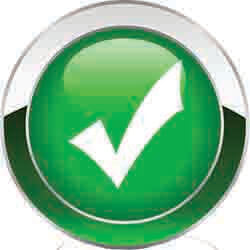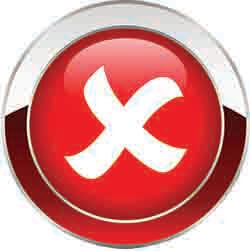What Are Wall Decals Made Of?

You’ve started reading about decals and stickers and are confused by the terms used in articles pertaining to the material they are printed on. Terms like vinyl paper, vinyl fabric, polyester vinyl, and so many more.
We here at Wallhogs scratch our heads when reading these same articles and ask ourselves “Aren’t vinyl and paper two different materials?” and the same for the terms polyester and vinyl – two completely different materials.
Let us assist you, with our nearly two decades of experience in wide format digital printing, in navigating the materials used for manufacturing decals and stickers.
Types of Decal & Sticker Materials
Until approximately 12 years ago the majority of decals or stickers were printed onto paper or vinyl materials. Even today, the vast majority are still produced on these media, however, newer fabric decal materials appeared on the market in 2008.
We will explore all of these options, so you are better acquainted with each material in order to make an informed decision about which is best for your application.
Paper Stickers
We’ve all grown up with and have used paper stickers with permanent adhesive, which can be traced back to Ancient Egyptian times. These are one-time-use stickers printed and die-cut, into normally smaller sets of stickers on sheets of standard paper.
Once applied to an application surface they are difficult to remove and usually tear or rip once you try to remove them.
These are terrific for a simple sticker product that is inexpensive, however, are difficult to remove and are one-time use.
Vinyl Stickers & Decals
Pressure-sensitive flexible vinyl materials were introduced to the world in the late 1950s. These materials were manufactured from polyvinyl chloride in one of two forms – cast or calendared.
Cast Vinyl
This is considered the industry's premium digital print material and begins as a liquid and is then poured into a mold called a cast that is only 1-2 mils (1/1000 or 2/1000's of an inch in thickness). Once cured the adhesive backing and transfer appear are applied.
This vinyl is intended for use in projects that require the vinyl to conform to complex, curved surfaces as it is more conformable due to how thin it is. It has virtually no shrinking characteristics, and will normally last for up to 10 years.
This type of vinyl is used for projects like vehicle wraps. It is also extremely expensive compared to calendared vinyl – normally 3-4 times the cost.
Calendared Vinyl
This intermediate or economy material begins as a sheet and is then heated and sent through compression rollers to make a thin, normally 4-8 mils, flexible vinyl that may be printed on.
This vinyl is intended for use on flat surfaces in temperature-controlled environments as it tends to shrink up to ½” over time - even more in colder conditions. It can last up to 10 years indoors, however, can be used outdoors if lamented properly, for up to 5 years.
Due to its thickness and ease of handling during installations, all wall stickers and decals are made from calendared vinyl.
Initially, in the 50s, both cast and calendared vinyl were manufactured as solid colors and were only available in about a dozen colors. This media could not be printed on and was intended to be used for die-cut letters to manufacture signs.
Over the next 20 years, media manufacturers would expand their offerings to include hundreds of colors, as well as metallic, fluorescent, and even wood grain features. These were great for long-term use indoors and outdoors, however, were manufactured with solvent permanent-based adhesives – meaning one-time use.
In the mid-1960s a newer adhesive was developed for pressure-sensitive vinyl thus creating a new product called water-based repositionable adhesive vinyl.
This new adhesive allowed users to reposition the graphics or images prior to the sticker or decal becoming permanent. As before, these were only offered as single-color vinyl that could be die-cut to manufacture signs.
It was not until 1991, that the first wide-format digital printers were introduced, and the current digital print process market exploded.
At this time the media manufacturers were also offering newer vinyl products that did not include Phthalates in the manufacturing process, as well as a new water-based removable adhesive that allows vinyl wall decals to be removed and reused up to five times.
This new Phthalate free vinyl is Wallhogs most popular vinyl wall decal product for indoor, temperature-controlled, flat, smooth, painted surfaces and we print hundreds of 52” W by 150’ long rolls per year.
Fabric Stickers & Decals
In 2008 a new finely woven polyester fabric adhesive-backed material was introduced to the digital wide format print market. We are fortunate to say Wallhogs was the very first to test this material and begin its use for custom wall decals that same year.
Polyester Fabric Photo-Tex, our premium material, can be used indoors or outdoors and removed and reused up to 100 times. This media can be utilized on slightly curved surfaces that or smooth or even slightly textured – like eggshell or orange peel finishes.
Regardless of the material, paper, vinyl, or fabric, they all consist of several layers of materials.
The first layer is a coating that allows the ink to properly adhere to the material surface for printing.
The second layer is the base material – paper, vinyl, fabric – however, can be nearly any soft, flexible material.
The third layer of the product is the adhesive.
The fourth and final layer is the backing paper or what is called in the print industry, carrier paper, which has a wax coating on one side.

Pros & Cons of Decal Materials
These advantages and disadvantages are only applicable to calendared vinyl and fabric wall decal materials. You can review a more detailed comparison here.
Pro/Con
Vinyl
Fabric
Removable


Reusable


Indoor


Outdoor


Smooth Surfaces


Textured Surfaces


Curved Surfaces


Water-Resistant


Weatherproof


Cost
Value
Premium
Other Questions Answered
If you have any other questions not answered here you can review our FAQ section, or contact one of our wall decor specialists using our toll-free number (877) 900-4647, M-F from 9 a.m. to 5 p.m. EST, or through email at cs@wallhogs.com.



